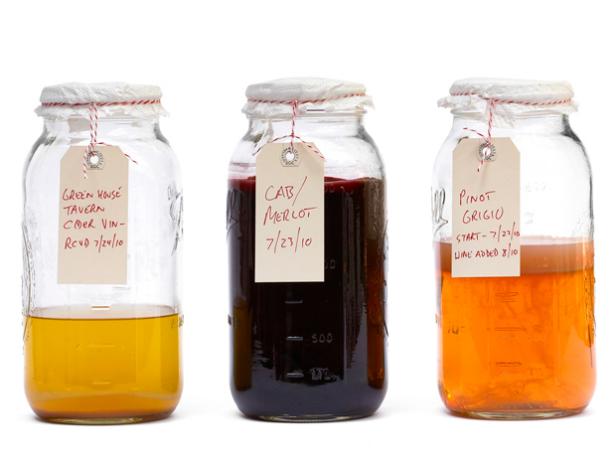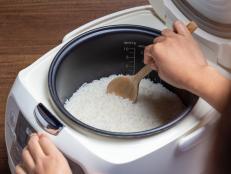Ask Ted: How to Make Homemade Vinegar


Lara Robby, Hearst Communications inc., 2010
Maybe this has happened to you: You have friends over for dinner. It's an occasion, so you open some nice wine. You stuff corks in the unfinished bottles. Three days later, the stuff is undrinkable, and you find yourself dumping an expensive delicacy down the drain, which makes you sad. Here's a better idea: With just a little effort, you can turn that leftover wine into the most delicious vinegar you’ve ever tasted.
Making vinegar has become a minor obsession of mine. In wine-loving countries like France, many home cooks keep an earthenware crock with a spigot on the counter for just this purpose. Good cooks know that vinegar is one of the most important ingredients in the pantry -- the essential acidic element in so many dishes and the crucial component in vinaigrettes. The cheapest wine you drink is almost certainly higher quality than the stuff most commercial manufacturers use to make vinegar, meaning your homemade version will be better and more complex (and, basically, free). You don’t even need special equipment; all you need is a large jar, a paper towel and a rubber band. Well, that’s almost all you need.
First, an explanation: When most wines are exposed to oxygen, they eventually turn to vinegar all by themselves. You could let your leftovers sit around in bottles, but you can speed and improve the process dramatically by exposing the wine to more oxygen and adding a little "mother of vinegar," the harmless bacteria that converts alcohol into acetic acid. You've probably seen mother in older bottles of unpasteurized vinegar; it’s the slimy gunk that forms at the bottom. (You won't find it in most commercial vinegars; they're pasteurized to kill the bacteria because it looks unappetizing.) You can get your own mother of vinegar online or at homebrewing or winemaking shops.
Any kind of wine will work: red, white, champagne, dessert ... or for that matter, almost any kind of quality ale or hard cider, as long as it contains alcohol. (Just avoid wine with sulfites.) Most wine actually has more alcohol than you want -- 12 to 14 percent, which is too strong for the bacteria to metabolize. So you need to dilute it. I usually mix equal parts wine and water, which results in a vinegar with mild tartness. For stronger flavor, try two parts wine to one part water. (You don’t need to dilute cider or malt liquor; they're typically only 5 to 6 percent alcohol.)
Next, pour the liquid into clean jars or a vinegar-making crock with a spigot on the bottom. Add mother according to the package directions, cover with a paper towel (this keeps oxygen in and fruit flies out), snap on the rubber band and leave the jar in a dark place. In a couple weeks, you should see a skin forming on the top; that’s new mother. (Check out that amazingly thick mama on my pinot grigio vin below -- scary!) You don't want to disturb this skin, or it will sink to the bottom and stop doing its job, and you'll lose time while another skin forms.
After two months, start tasting: Carefully nudge a straw around the edge of the mother into the liquid, put your finger over the end of the straw and draw off enough to taste. (Here’s where you’ll have an advantage if you're making vinegar in a crock with a spigot, because you can take a taste from the bottom without disturbing the mother.) If the vinegar still tastes wine-y and doesn't have enough tang, give it a couple more weeks. If it’s too tart, add water. When the vinegar tastes good to you, strain and bottle it. Recycled wine bottles are great for this, as are those beer bottles with the white porcelain-and-rubber stoppers. Your homemade vinegar will taste better than any you can buy, and it makes a great gift year-round.
































































